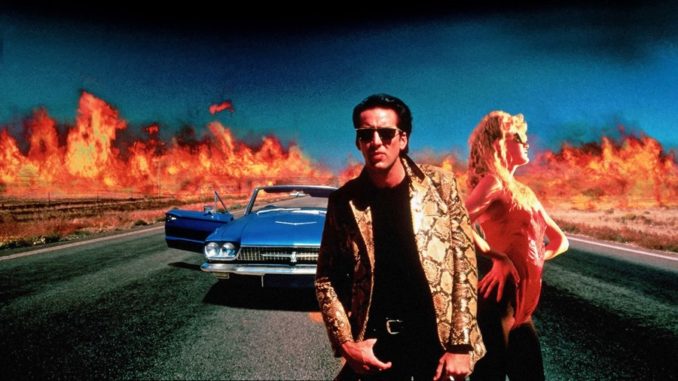
David Lynch’s only road movie leaves plenty to the imagination in its 124 minute runtime. Despite its excessive use of humor, there’s strong allusions to his previous film, Blue Velvet. A film that explores the dark corners of Lynch’s perspective on Americana through Jeffrey Beaumont. Wild At Heart subverts the comically cliché formula of American romanticism and portrays it with the same cynicism as Blue Velvet. The underlying theme among the southern accents and bizarre characters is one underrated fact: American decline.
20th Century American Southern Theme
Derived from the John Eldredge novel, the central plot remains the same albeit with its nihilistic ending. Like Blue Velvet, Lynch insists on a positive last impression to his coming of age journey. Yet, the themes that are alluded to in Wild At Heart are brought to their natural conclusion in the book. The director goes through great lengths to replicate the models displayed by American authors such as Margaret Mitchell and Charles Frazier, specifically the rural communities. Set in North Carolina, a modern day Cold Mountain-esque love story sets the stage. Paying homage to a bygone era, reality seeps into the film little by little as the utopian road trip becomes an inescapable voyage through decadence. Lula comes to this realization before Sailor, although they both eventually reach the same conclusion. Their life on the road became a learning experience that their fate could ultimately unravel in the same senseless demise as Bobby Peru. A character, who’s nothing beyond a caricature, portrays the middle and end of a cycle. Sailor and Lula have eye opening encounters with him and both leave a lasting impression that prompt them to change course.
Decline Of The West
Wild At Heart ushered in a new subgenre showcasing the excessive self parody of American debauchery, a concept that would be further explored in Oliver Stone’s Natural Born Killers with less subtlety. From the messaging in To Die For to the tone of Fear And Loathing In Las Vegas, these films focus on political underpinnings that explicitly describe what Oswald Spengler called The Decline Of The West. The concept that the West would deteriorate beginning in the year 2000 due to self destructive behavior promoted in society could not be more true in the decade prior to Spengler’s claim. Many directors had a similar observation such as Terry Gilliam and Gus Van Zant, openly embracing the self satirized version of American culture. While the heartland may not seem like the proper setting to find the worst aspects of national decline compared to Las Vegas, it shows viewers that all states are susceptible to corruption.
Along the road trip, there is no shortage of hints about the dire state of the world around them. A visit to the trailer park is introduced by the local attendees talking about the absurd crime epidemic in the area. Lula nearly loses it after their drive through the desert is interrupted by distracting radio reports ranging from. All of these warning signs come to a breaking point when the couple encounters a car accident at night while scrambles to make sense of the situation. This is when the chaos is confronted by the main characters, addressing the madness face to face for the first time.

Leave a Reply